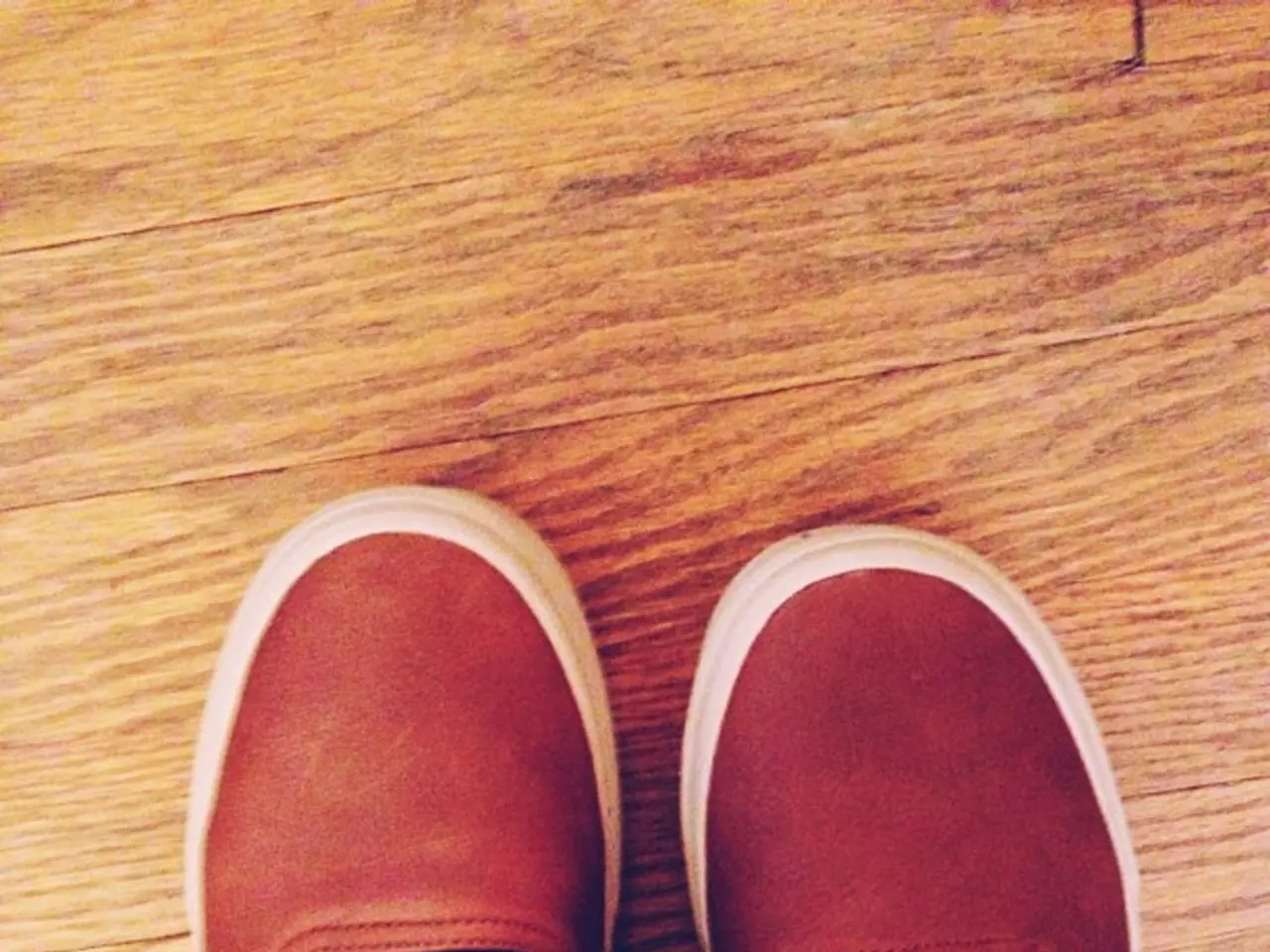Treatments for a bruised heel and knowing when to consult a physician
A bruised heel, medically known as a heel contusion, is an injury that affects the soft tissue around the heel, causing bleeding beneath the skin without breaking it. This common occurrence can be a result of a sudden blow to the heel, such as from a fall.
Symptoms of a bruised heel include pain, swelling, and discomfort, which can make walking difficult. Fortunately, there are several ways to alleviate the discomfort and speed up the healing process.
In the initial stages, it is advisable to rest the affected area and avoid strenuous activity for a few days. Immobilizing the foot and heel using a wrap or splint can put gentle pressure on the heel, reducing pain and swelling. Elevating the heel by sleeping with the foot above the level of the heart and elevating it as often as possible during the day can also help reduce swelling and pain.
Gently massaging the area around the heel can promote blood flow and help ease muscle tension. However, it's important to avoid doing anything that hurts, including heel stretches or exercises, with a bruised heel.
Wearing comfortable shoes that fit well and do not rub the heel can help prevent bruised heel injuries. In some cases, special orthotic shoes or soft heel inserts may provide additional relief. It's also crucial to avoid walking barefoot on hard surfaces with a bruised heel.
In severe cases, a doctor might recommend physical therapy, prescription shoes, or prescription pain medication. In children and adolescents with heel pain, prompt medical attention is essential, as injuries in young people can affect their growth and development.
It's important to note that a bruise can take several weeks to heal, depending on its severity. However, a bruise is not always the only cause of heel pain. Other common causes include plantar fasciitis, Achilles tendonitis, heel spurs, stress fractures, fat pad atrophy, Sever’s disease, and pump bump.
These conditions often share risk factors such as improper or non-supportive footwear, obesity, excessive running or physical activity, tight calf muscles, and occupations requiring long hours of standing. For accurate diagnosis and management, consultation with a podiatrist is recommended. They can use physical examination and imaging to identify the exact cause and provide tailored treatment options.
In some cases, the doctor may recommend steroid injections to speed healing and ease the pain, or even surgery. If the pain is unbearable or there is concern about a serious injury, it's essential to seek medical attention immediately.
Heel injuries can destabilise the foot, increasing the risk of other injuries. Therefore, addressing heel pain early can help prevent further complications and speed up the healing process.
A simple foot and heel stretch may help alleviate discomfort. While sitting, lift the injured heel and cross the foot over the other leg, gently pulling the toes back toward the body until a stretch is felt. Remember, only a healthcare provider can accurately diagnose the cause of heel pain.
In conclusion, a bruised heel can be a painful and inconvenient condition, but with proper care and treatment, it can be managed effectively. If you experience heel pain, consider the advice provided here and consult with a healthcare professional for a proper diagnosis and treatment plan.
- A bruised heel, also known as a heel contusion, can lead to conditions like eczema on the skin due to continued pressure and friction.
- The workplace-wellness program could include the importance of skin care to prevent such foot-related issues, like maintaining healthy skin to prevent the onset of eczema.
- Diabetes, a chronic disease, can complicate the healing process of a bruised heel, making it crucial to manage blood sugar levels during recovery.
- Nevertheless, various types of therapies and treatments exist, such as CBD-based topical creams, which can help alleviate inflammation and pain associated with a bruised heel.
- A nutritionist might recommend a balanced diet to aid in healing, ensuring proper nutrition for people dealing with a bruised heel, regulating blood sugar levels in diabetics, and promoting overall health and wellness.
- Mental health is equally important in managing chronic diseases like diabetes and working through the discomfort and inconvenience of a bruised heel. Depression and anxiety can negatively impact the healing process; seeking help and support might be beneficial.
- While waiting for the bruised heel to heal, it's advisable to refrain from strenuous activity like intense fitness and exercise to prevent aggravating the injury and any potential flare-ups of diseases like diabetes or asthma.
- Asthma sufferers should monitor their respiratory conditions carefully, as strenuous exercise could trigger an asthma attack when recovering from a bruised heel.
- In some cases, conditions like NSCLC (non-small cell lung cancer), Crohn's disease, or Alzheimer's might exacerbate the pain and difficulty in healing a bruised heel, making it necessary to consult with healthcare professionals during the recovery process.
- It's vital to understand the relationship between nutrition, fitness, and other health-related issues, like psoriasis, which might benefit from a well-balanced, healthy diet during the recovery from a bruised heel.
- In addition to promoting healthy skin care, workplace-wellness programs could also address potential risks associated with chronic diseases like HIV, obesity, and nutrition, which could have adverse effects on foot health and the healing process.
- Furthermore, a healthcare professional may recommend medications like prescription pain medication for managing pain related to a bruised heel, while keeping in mind any potential interactions with other medical conditions such as HIV or depression.
- Lastly, science continues to explore new frontiers in understanding and treating various health issues, including chronic diseases like NSCLC, asthma, depression, and even skin conditions like psoriasis, which can provide further insights and solutions to help people deal with foot injuries like a bruised heel.




